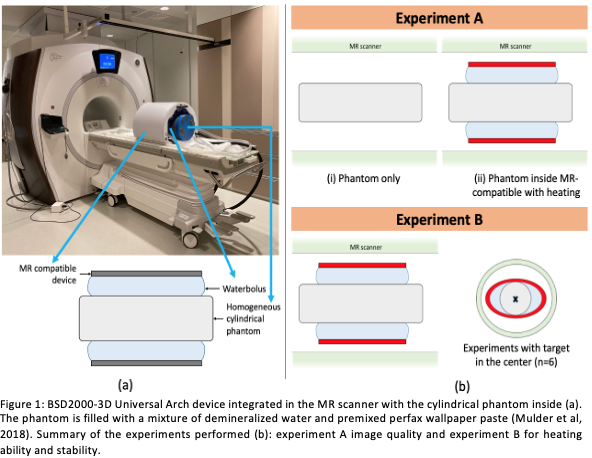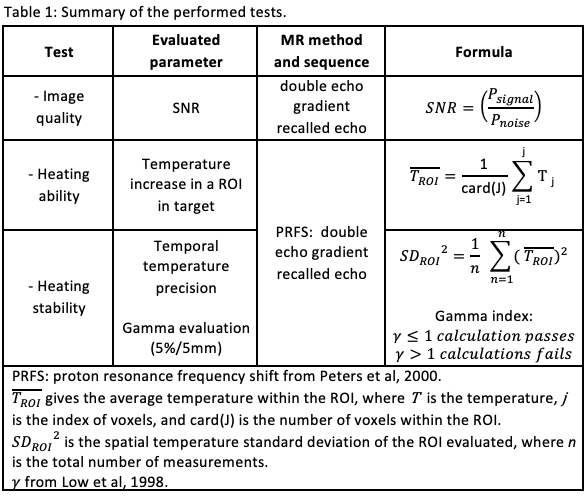First commissioning tests of the BSD2000-3D Universal Arch MR-compatible hyperthermia device
Carolina Carrapiço-Seabra,
The Netherlands
PD-0902
Abstract
First commissioning tests of the BSD2000-3D Universal Arch MR-compatible hyperthermia device
Authors: Carolina Seabra1, Iva VilasBoas-Ribeiro1, Kemal Sumser1, Sergio Curto1, Gerard C. van Rhoon1,2
1Erasmus MC Cancer Institute, University Medical Center Rotterdam, Department of Radiotherapy, Rotterdam, The Netherlands; 2Faculty of Applied Sciences, Delft University of Technology, Department of Radiation Science and Technology, Delft, The Netherlands
Show Affiliations
Hide Affiliations
Purpose or Objective
Hyperthermia is a potent sensitizer to radiotherapy, and its goal is to increase tumor temperature up to 43°C. Magnetic resonance (MR) guided hyperthermia systems are the latest technology that allows non-invasive temperature monitoring of the target volume and precise energy delivery. Hence, imaging and heating performance are critical components for the success of treatment, making essential the commissioning of such systems. In Erasmus MC, the BSD2000-3D Universal Arch MR-compatible hyperthermia device operates with GE MR450w 1.5T MR scanner (Figure 1a). Comparing to the previous MR compatible systems, the new device includes novel patient positioning and electrical balanced RF-feeds to the 12 dipole-pairs for tumor heating. This study presents the first commissioning experience of the Universal Arch device. We performed tests to, firstly, evaluate the influence of the novel MR-compatible device on MR quality imaging and, secondly, assess the heating quality profile.
Material and Methods
All tests were conducted using a cylindrical phantom. The two types of experiments performed are represented in Figure 1b. In experiment A, image quality was evaluated by calculating signal to noise ratio (SNR) in two setups: (i) phantom only and (ii) when phantom is heated with the device, using the clinical MR thermometry (MRT) sequence (Curto et al, 2020). In experiment B, heating performance was evaluated in terms of ability and stability using MRT with the proton resonance frequency shift method. Heating ability was evaluated, in the six experiments, by accessing temperature increase in a region of interest (ROI) of 3cm diameter in the target. For stability, temperature precision was calculated in the same ROI between the same measurements. The Gamma method was applied to compare the reproducibility of the six measurements. Criteria of 5%/5mm was used, given resolution, and required hyperthermia treatment accuracy. Table 1 details these tests.


Results
Concerning image quality, the SNR of the phantom only setup was 248 and decreased to 106 under the influence of the device. Yet, this shows a drastic improvement over the previous generation of this device, which had an SNR of 15 due to the requirement of off-center phantom placement. Regarding heating ability, temperature increase in the target ROI was on average 6°C in 10 minutes. Temperature standard deviation was 0.32°C, showing the heating stability of the MR-compatible device. Comparison of all central target measurements yielded a median gamma index of 95%, for a criterion of 5%/5mm.
Conclusion
This study showed that image quality with the new device increased by a factor of seven compared to the older generation. Ability of heating in terms of temperature increase followed quality assurance guidelines. Since no specific commissioning tests are defined in the literature, these tests and results may be used as a first assessment to standardize the commissioning of MR-compatible devices.